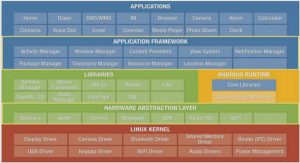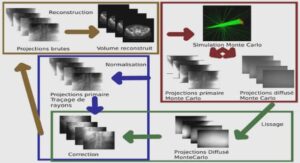Mindfulness and psychoeducation to manage stress in amnestic mild cognitive impairment
Methods
Participants
This study included 48 participants recruited in two cohorts from Hudon’s laboratory database, newspaper ads, and medical references related to memory concerns from Quebec City’s physicians. Participants were aged at least 55 years old and suffered from aMCI according to the diagnostic criteria of Petersen (2004). Exclusion criteria were a history of: 1) moderate or severe head injury; 2) stroke; 3) delirium in the last 6 months; 4) encephalitis or bacterial meningitis; 5) psychotic symptoms or manic episode; 6) electroconvulsive therapy in the last 12 months; 7) intracranial surgery; 8) cancer treatment in the last 12 months; 9) general anesthesia in the last 6 months. They also included: 10) neurological disorders (i.e., except suspected prodromal AD); 11) untreated medical or metabolic conditions; 12) current major depressive disorder according to the diagnostic criteria of the DMS-5 (APA, 2013); 13) current substance abuse disorder; 14) uncorrected vision or hearing problems; 15) recent experience with psychotherapy or cognitive restructuring that might impact cognition; 16) significant experience with meditation or other contemplative approaches; and 17) not being able to attend one of the first four sessions of either the MBI or the PBI program. The sample size was established according to an a priori power analysis.
Procedures
Eligibility of participants was determined during a screening session, which included a complete description of the study protocol, approved by the Research Ethics Board of the Institut universitaire en santé mentale de Québec (IUSMQ, attestation #398). During this screening session participants also provided written informed consent as well as clinical and neuropsychological measures (see Annexe D). The final decision regarding the inclusion of the participants who met the diagnostic criteria of aMCI was confirmed by consensus of a small group of researchers and clinicians. Selected participants were randomly assigned to MBI or PBI. Then, they were invited to take part in a pre-intervention session during which they completed self-reported efficacy measures, and received instructions and devices to collect salivary samples at home (see Annexe E). Two days prior to the first session of MBI or PBI and the post-intervention session, participants were instructed to collect salivary samples at home and bring them back to the CERVO research center. At the end of MBI or PBI, participants took part in a post-intervention session to complete self-reported efficacy measures the same way as during the pre-intervention session. Screening as well as pre- and post- intervention sessions were administered by trained research assistants at the CERVO.
Interventions
Both MBI and PBI were held in groups of 12 participants over a period of eight weeks. Each weekly session lasted 2.5 hours and included a 15-minute break mid-session (see Table 1).
MBI. The MBI program developed by Larouche, Goulet, and Chouinard (2015) was based on Kabat-Zinn’s Mindfulness-Based Stress Reduction (1990) and several other sources (Bartley, 2011; Carlson & Speca, 2010; Fournier, 2011; Monestès & Villate, 2011; Segal, Williams & Teasdale, 2012). The MBI program was designed with the specific needs and limitations of older adults in mind, based on the recommendations published by McBee (2008) and the results of a pilot study (Larouche, Chouinard, Hudon & Goulet, 2015). For instance, all meditative practices were performed in a sitting position on a chair, at-home meditative practices were shortened to 30 minutes daily rather than the more common duration of 45 minutes, and instructions were simplified and supported by concrete examples. The essence and goals of leading mindfulness programs were respected. Every session comprised a guided meditation (i.e., body scan, mindful movement, mindful walking, sitting meditation, and meta-meditation), group discussions, and psychoeducation about mindfulness themes along with stress management. Participants were instructed to practice mindfulness meditation at home, about 30 minutes per day, six days a week. As support for at-home meditative practices, participants were given CDs with guided meditations, written instructions, and short texts about the theme of the week’s session. They also received a weekly call from one of the instructors to ensure adherence, respond to questions, and prevent withdrawal. The MBI was administered by its three developers whose credentials can be provided upon request.
PBI. The psychoeducation program was developed by Parent, Larouche, Chouinard, and Hudon (2015). Participants assigned to the PBI received psychoeducational information about cognitive aging that did not refer to mindfulness or strategies to improve cognition. Topics covered were related to the distinction between normal and pathological cognitive aging. Every session comprised psychoeducation about a weekly theme (i.e., normal vs pathological aging) and group discussions. The psychoeducational information was provided with the support of a visual presentation and written summaries. The PBI was administered by three trained instructors.
(Insert Table 1 here)
Materials
Primary efficacy measures.
Psychological stress. Psychological stress was assessed using the Geriatric Anxiety Inventory (GAI; Champagne, Landreville, Gosselin & Carmichael, 2015; Pachana et al., 2007) and the Perceived Stress Scale (PSS; Cohen, Kamarck & Mermelstein 1983; Lesage, Berjot & Deschamps, 2012). These self-reported questionnaires were selected because they were both validated with the aMCI population and showed great validity and reliability (PSS: Ezzati et al., 2014; GAI: Rozzini et al., 2009). The GAI, designed for older adults (Pachana et al., 2007), is a 20-item questionnaire asking participants to indicate whether they « agree = 1 » or « disagree = 0 » with an item based on how they felt during the last week. Total scores range from 0 to 20 and higher scores represent higher levels or frequencies of anxiety symptoms. A score between 8 and 10 suggests a clinical level of anxiety and a score above 10 indicates a strong possibility of generalized anxiety disorder. The PSS is one of the most commonly used self-reported questionnaires in psychophysiological research because of its positive association with cortisol (Ezzati et al., 2014). It is a 10-item questionnaire with a five-point Likert scale ranging from « never = 0 » to « very often = 4 ». Maximum score is 40, with higher scores indicating higher levels of perceived stress.
CAR. Participants were instructed to collect saliva samples at home using specific collection devices (Salivettes® cortisol, Sarstedt, Germany) according to the manufacturer’s instructions. On two consecutive days, participants collected a saliva sample immediately after awakening and 30 minutes later to allow for CAR calculation. During these two days, participants were asked to record, in a journal, the exact time at which they collected saliva samples as well as any behaviors that might have influenced the endocrine system (e.g., alcohol consumption). Participants were asked to store saliva samples in their home freezers until they returned them to the CERVO’s Genomics Laboratory where they were stored at -20 C. Purified saliva was extracted from the Salivettes® cortisol by centrifugation at 1000 x g for two minutes. Salivary cortisol concentrations were assessed using the Salimetrics® Cortisol Enzyme Immunoassay Kit (Salimetrics®, Cedarlane Laboratories, Ontario, Canada), a validated assay to measure in vitro quantitative salivary cortisol (Salimetrics®, 2014). CAR was calculated using raw salivary cortisol levels and corresponds to the mean levels of salivary cortisol in the first saliva sample collected immediately upon awakening subtracted from the second sample collected 30 minutes post-awakening.
Secondary efficacy measures.
Coping strategies. Coping strategies used by participants when under stressful conditions in everyday life were evaluated with the dispositional scale of the Brief-COPE (Carver, 1997), the short version of the COPE Inventory (Carver, Scheier &Weintraub, 1989). The dispositional scale of the Brief-COPE is a 28-item questionnaire with a four-point Likert scale ranging from « not at all = 0 » to « completely = 3 ». The tool assesses 14 different coping strategies, which can be grouped under three categories: 1) emotion-focused coping strategies (e.g., positive reinterpretation); 2) problem-focused coping strategies (e.g., planning); 3) dysfunctional coping strategies (e.g., denial). Emotion- and problem-focused coping strategies were both considered adaptive. An overall score was calculated for each category and for each of the 14 strategies, with higher scores indicating more frequent use of the coping strategy or category.
Mindfulness attitudes. The Five Facets Mindfulness Questionnaire (FFMQ; Baer, Smith, Hopkins, Krietemeyer & Toney, 2006) assesses five different mindfulness attitudes:
1) observation (i.e., to observe internal and external experiences with mindful awareness);
2) description (i.e., to describe or label internal experiences with words); 3) acting with awareness (i.e., to act with concentration and awareness instead of performing daily life activities on automatic pilot); 4) non-judgment (i.e., to take a non-evaluative stance toward internal and external experiences); and 5) non-reactivity (i.e., to allow and accept internal experiences without being carried away or submerged by them) (Baer et al., 2006; Heeren, Douilliez, Peschard, Debrauwere & Philippot, 2011). The FFMQ includes 39 items with a Likert scale ranging from « never or rarely true = 1 » to « very often or always true = 5. » Each mindfulness attitude represents a subscale associated with a score. Overall scores of mindfulness range from 39 to 195, with higher scores indicating higher mindfulness attitudes.
At-home meditative practices. The amount of time devoted to at-home meditative formal practices was used to quantify its integration into daily life and to assess the comparative effects of regular versus low mindfulness practice on certain variables. At-home meditative practices time was self-reported on a paper calendar provided to MBI participants every week. The total amount of practice time for each participant was used in the analyses (see section Complementary analyses below).
Statistical analyses
Preliminary analyses
Data analyses were performed using the Statistical Package for the Social Sciences (SPSS) version 24.0. The significance level was set at p <.05. All variables were tested for normality and homogeneity of variance assumptions with Shapiro-Wilk’s and Levene’s statistical tests. Pre-intervention equivalence between the MBI and PBI groups was assessed based on sociodemographic and clinical variables (i.e., sex age, education, medication, and Montreal Cognitive Assessment). The Student’s t test for independent samples was selected for normally distributed continuous variables (i.e., age, education and Montreal Cognitive Assessment) and a Chi-Square test was applied to nominal variables (i.e., sex and medication). In addition, the Student’s t test and the Mann-Whitney’s U test for independent samples were used to compare time of saliva sampling, ensuring both groups collected their samples at similar moments and respected the cortisol sampling protocol pre- and post-intervention.
Efficacy analyses
A linear mixed model with Intervention as the between-subjects factor (i.e., MBI and PBI) and Time as the within-subjects factor (i.e., pre- and post-intervention) was carried out for each category of primary (i.e., psychological stress and physiological stress) and secondary (i.e., coping strategies) efficacy variables to assess the impacts of each intervention individually and compare them. Percentages of change and effect sizes (i.e., Cohen’s d; Cohen, 1988) were also calculated.
Complementary analyses
Firstly, a Student t test for dependent samples was used to determine the impacts of MBI on mindfulness attitudes from pre- to post-intervention. Secondly, MBI participants were divided in two subgroups according to the total amount of time dedicated to at-home meditation during the eight-week program (i.e., MBI+: total time above the mean; MBI-: total time below the mean) to verify the influence of practice on psychological and physiological stress, coping strategies, and mindfulness attitudes. The two subgroups were compared with Student’s t tests for independent samples on the pre- and post-intervention values and on the percentages of change of the primary and secondary efficacy variables. To add to these results, a multiple linear regression model using the stepwise method was applied to determine if some participant’s characteristics (e.g., age, sex, perceived stress level, etc.) predicted the amount of time dedicated to at-home meditative practices.
Results
Participants’ characteristics
From the initial sample (n = 48), seven participants dropped out for various reasons (e.g., lack of time) (see Figure 1). Therefore, results refer to pre- and post-intervention data from 41 participants. Both MBI (n = 20) and PBI (n = 21) were equivalent regarding sex (χ² (1, N = 41) = .27 , p = .61), age (t (39) = .98 , p = .33), education (t (39) = .44 , p = .66), general cognitive functioning (i.e., MoCA score; t(39) = .037 , p = .97), any type of medication (χ² (1, N = 41) = .24 , p = .62), and medication that might affect the endocrine system (χ² (1, N = 41) = .62 , p = .43) (see Table 2). Prescription drugs that might affect the endocrine system listed from the participants were: 1) inhibitors of angiotensin converting enzyme; 2) antihypertensive; 3) sedatives; and 4) hypnotics.
(Insert Figure 1 here)
Overall, the majority of participants attended most of the MBI and PBI sessions, with an average participation rate of 93.8% and 92.3%, respectively. The analysis of the calendars completed by MBI participants indicated that they accumulated an average of 2.5 hours of at-home meditative practices per week, fairly on par with the instructions (i.e., ≈ 3 hours/week).
(Insert Table 2 here)
Primary efficacy measures
Psychological stress. Scores on both the GAI and the PSS were not significantly influenced by the factors Intervention (GAI: F (1, 39) = .001, p = .978, d = .01; PSS: F (1, 39) = .192 , p = .664, d = .14) and Time (GAI: F (1, 39) = 1.307 , p = .260, d = .16; PSS: F (1, 39) = 3.702 , p = .062, d = .62), and did not vary as a function of the Intervention x Time interaction (GAI: F (1, 39) = .127 , p = .724, d = .11 ; PSS: F (1, 39) = 1.399 , p = .244, d =.38). Based on a priori predictions and visual inspection of data (see Table 3), however, follow-up comparisons of the simple effects comprising the Intervention x Time interaction were carried out and confirmed a significant reduction of perceived stress levels from pre- to post-intervention only in participants of the PBI intervention (F (1, 39) = 4.95, p = .032).
Physiological stress. Adherence to the salivary cortisol collection protocol was assessed with the journals filled by the participants. Inspection of the journals indicated that the main instructions (e.g., do not eat 30 minutes before taking a saliva sample) were well respected. In addition, the Student’s t test and the Mann-Whitney’s U test for independent samples showed no significant difference between times of saliva collection among MBI and PBI pre- and post-intervention.
Mean concentrations of salivary cortisol collected at awakening and 30 minutes later were within the expected standards based on age and sex, issued by Salimetrics® (2014). Similar to psychological stress scores, the CAR was not significantly affected by Intervention (F (1, 39) = .81, p = .37, d= .29) and Time (F (1, 39) = .98, p = .33, d= 0.32), and the Intervention x Time interaction was not significant (F (1, 39) = .13, p = .73, d =.12). The effect sizes for each group (see Table 3) suggested that PBI generated low to no impact (i.e., effect size not exceeding d ≥ .20) on CAR, whereas MBI induced a slight decrease post-intervention.
(Insert Table 3 here)
Secondary efficacy measures
Coping strategies. Coping strategy variables were not significantly influenced by Intervention and the Time x Intervention interaction was not significant. However, Time positively influenced problem-focused coping strategies (F (1, 39) = 4.378, p = .043, d = .67), particularly active coping (i.e., take concrete actions to improve stressful situations) (F (1, 39) = 9.146, p = .004, d = .97) for MBI and PBI combined (see Table 4).
(Insert Table 4 here)
Mindfulness attitudes. Results revealed a significant increase from pre- to post-MBI on the FFMQ total (t (19) = -6.52, p = .000) and the subscales observation (t (19) = -2.6, p = .018), non-reactivity (t (19) = -3.72, p = .001), and non-judgement (t (19) = -6.79, p = .000) (see Table 5).


